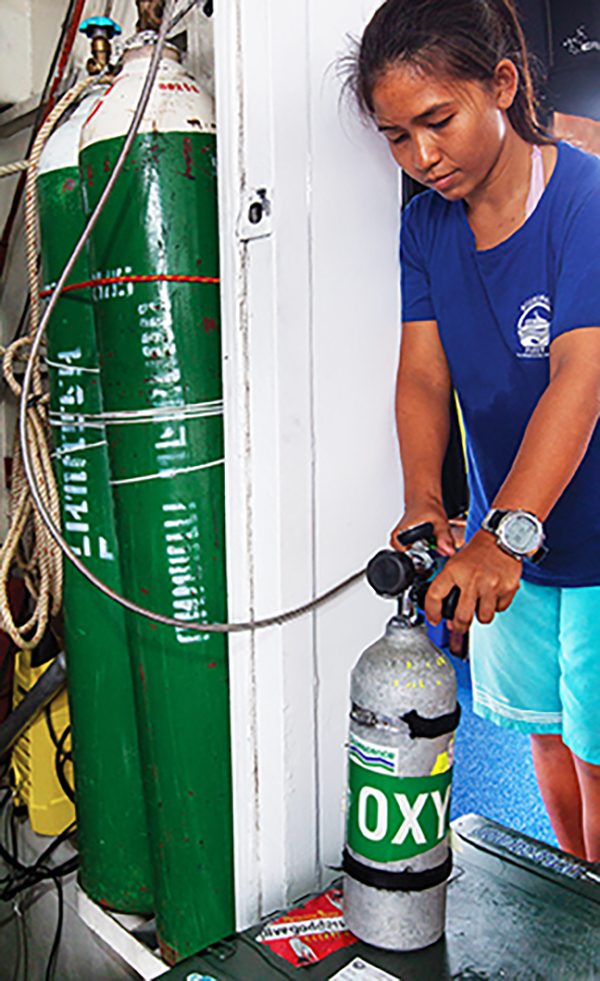Part 2: The Essential Steps in Oxygen Cleaning High-Pressure Scuba Equipment
IN THE PREVIOUS ARTICLE, we settled on the recommendation that equipment used to control any breathing gas mix containing 25 percent oxygen and above at typical scuba cylinder pressures should be designed and considered suitable for oxygen use.
Possible debates aside, we’ll examine what oxygen cleaning means. How often should gear be oxygen cleaned, and what does this process entail?
While you might expect a regular interval for oxygen cleaning, this is usually not the case. The criteria for cleaning high-pressure equipment and components are as follows:
- when put into service for the first time
- when replacing any components
- after servicing and before reassembly, including cylinders after hydrostatic testing and cylinder valves and first-stage regulators after servicing or repair
- when there is any form of suspected contamination
- when any reason to doubt cleanliness exists, such as uncontrolled disassembly of equipment, using an unauthorized component, or a lack of confidence in a component’s cleaning or a contracted cleaning service
- according to the equipment manufacturer’s requirements
Outside of these criteria, periodic cleaning between service intervals should not be necessary.
While fires in compressed-oxygen equipment are rare, oxygen cleaning, when done correctly, will remove contaminants and lower the risk of a fire or explosion.

Oxygen cleaning of scuba equipment requires a well-planned, tested, and effective procedure consisting of seven essential steps.
- Initial inspection to determine whether it can be cleaned and how
- Initial mechanical cleaning to remove any visible dirt or contamination, followed by degreasing using a cleaning agent suitable for oxygen service
- Flush using clean, potable water to remove all cleaning agent residue.
- Dry using oxygen compatible air or other gas, which must be oil-free.
- Final inspection for any remaining surface contamination, which can include any or all of the following: Use a bright white or UV light in a darkened inspection area, use a fine water spray on the components and look for instant beading, or wipe the cleaned area with a clean, lint-free, white cloth and inspect the cloth with a white or UV light (this works well for cavities and hard-to-view surfaces)
- Preserve the cleaning by immediately packaging or otherwise protecting the components from contamination.
- Document the process in writing, and issue documentation for each item cleaned with a certificate, report, or sticker recording the technician, date, cleaning agents, and inspection methods.
Only properly trained, competent technicians should perform oxygen cleaning. Some industries require laboratory validation of cleanliness, but this is not usually the case in the diving industry, as a well-designed process will effectively remove any readily flammable contaminants.
No amount of cleaning and inspection can guarantee completely safe equipment. However, as we saw in the first part of this series, fires occur infrequently and somewhat unpredictably. Proper oxygen cleaning can help ensure there is no combustible fuel and increase confidence in your safety. AD
Alert Diver - Q3 2022